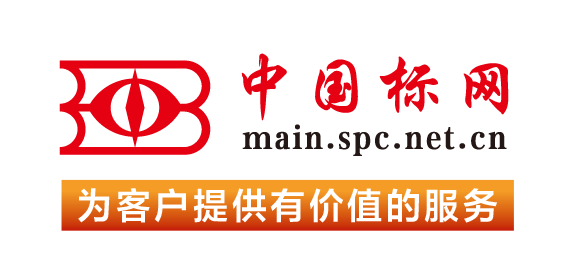5.1 Flexural properties determined by these test methods are especially useful for research and development, quality control, acceptance or rejection under specifications, and special purposes.5.2 Specimen depth, temperature, atmospheric conditions, and the difference in rate of straining specified in Test Methods A and B are capable of influencing flexural property results.1.1 These test methods are suitable for determining the flexural properties for any solid or hollow manufactured plastic lumber product of square, rectangular, round, or other geometric cross section that shows viscoelastic behavior. The test specimens are whole “as manufactured” pieces without any altering or machining of surfaces beyond cutting to length. As such, this is a test method for evaluating the properties of plastic lumber as a product and not a material property test method. Flexural strength cannot be determined for those products that do not break or that do not fail in the extreme outer fiber.1.2 Test Method A, designed principally for products in the flat or “plank” position.1.3 Test Method B, designed principally for those products in the edgewise or “joist” position.1.4 Plastic lumber currently is produced using several different plastic manufacturing processes. These processes utilize a number of diverse plastic resin material systems that include fillers, fiber reinforcements, and other chemical additives. The test methods are applicable to plastic lumber products where the plastic resin is the continuous phase, regardless of its manufacturing process, type or weight percentage of plastic resin utilized, type or weight percentage of fillers utilized, type or weight percentage of reinforcements utilized, and type or weight percentage of other chemical additives.1.4.1 Alternative to a single resin material system, diverse and multiple combinations of both virgin and recycled thermoplastic material systems are permitted in the manufacture of plastic lumber products.1.4.2 Diverse types and combinations of inorganic and organic filler systems are permitted in the manufacturing of plastic lumber products. Inorganic fillers include such materials as talc, mica, silica, wollastonite, calcium carbonate, and so forth. Organic fillers include lignocellulosic materials made or derived from wood, wood flour, flax shive, rice hulls, wheat straw, and combinations thereof.1.4.3 Fiber reinforcements used in plastic lumber include manufactured materials such as fiberglass (chopped or continuous), carbon, aramid and other polymerics; or lignocellulosic-based fibers such as flax, jute, kenaf, and hemp.1.4.4 A wide variety of chemical additives are added to plastic lumber formulations to serve numerous different purposes. Examples include colorants, chemical foaming agents, ultraviolet stabilizers, flame retardants, lubricants, anti-static products, biocides, heat stabilizers, and coupling agents1.5 The values stated in inch-pound units are to be regarded as standard. The values given in parentheses are mathematical conversions to SI units that are provided for information only and are not considered standard.1.6 This standard does not purport to address all of the safety concerns, if any, associated with its use. It is the responsibility of the user of this standard to establish appropriate safety, health, and environmental practices and determine the applicability of regulatory limitations prior to use.NOTE 1: There is no known ISO equivalent to this standard.1.7 This international standard was developed in accordance with internationally recognized principles on standardization established in the Decision on Principles for the Development of International Standards, Guides and Recommendations issued by the World Trade Organization Technical Barriers to Trade (TBT) Committee.
定价: 590元 加购物车
This specification covers coextruded poly(vinyl chloride) plastic pipe with a cellular core and concentric inner and outer solid layers. The pipe is produced using a multilayer coextrusion die for nonpressure use in three series: an IPS Schedule 40 series; a PS series with an iron pipe size outside diameter with varying wall thickness as required for pipe stiffness of 25, 50, and 100; and a sewer and drain series. The pipe shall comply with the minimum wall thickness, outside diameter, length, stiffness, flattening, impact strength, bond strength, and extrusion quality requirements.1.1 This specification covers coextruded poly(vinyl chloride) (PVC) plastic pipe with a cellular core and concentric inner and outer solid layers, and is produced using a multilayer coextrusion die for nonpressure use in three series: an IPS Schedule 40 series for DWV; a PS series with an iron pipe size (IPS) outside diameter with varying wall thickness as required for pipe stiffnesses of 25, 50, and 100 for communication conduit, and a sewer and drain series.1.2 The function of this specification is to provide standardization of product-technical data and serve as a purchasing guide.1.3 The text of this specification references notes, footnotes, and appendixes which provide explanatory material. The notes and footnotes (excluding those in tables and figures) shall not be considered as requirements of the specification.NOTE 1: All the pipe series covered by this specification are permitted to be perforated or belled for joining by solvent cement or belled for joining by an elastomeric seal (gasket). Because this pipe is OD controlled, the inside diameter will vary, and therefore, the pipe ID is not suitable for use as a socket. (For more information see Specification D2672.)NOTE 2: This standard specifies dimensional, performance and test requirements for plumbing and fluid handling applications, but does not address venting of combustion gases.1.4 The values stated in inch-pound units are to be regarded as standard. The values given in parentheses are mathematical conversions to SI units that are provided for information only and are not considered standard.NOTE 3: Specifications related to this specification are as follows: D2665, D2729, D3034, F512, F758, and F789.1.5 This standard does not purport to address all of the safety concerns, if any, associated with its use. It is the responsibility of the user of this standard to establish appropriate safety, health, and environmental practices and determine the applicability of regulatory limitations prior to use.1.6 This international standard was developed in accordance with internationally recognized principles on standardization established in the Decision on Principles for the Development of International Standards, Guides and Recommendations issued by the World Trade Organization Technical Barriers to Trade (TBT) Committee.
定价: 590元 加购物车
This specification covers electrical insulating tape consisting of a flexible backing made from vinyl chloride plastic coated on one side with a pressure-sensitive adhesive. The tape shall be classified according to thickness: Type I and Type II. The backing shall be polyvinyl chloride plastic suitably compounded to meet the requirements of this specification. The backing shall be smooth and uniform. The selection of rolls, conditioning, and testing shall be in accordance with the specified requirements.1.1 This specification covers electrical insulating tape consisting of a flexible backing made from vinyl chloride plastic coated on one side with a pressure-sensitive adhesive.1.2 The values stated in SI units are the standard. The values given in parentheses are provided for information purposes only.
定价: 515元 加购物车
 我的标准
我的标准 购物车
购物车 400-168-0010
400-168-0010











 对不起,暂未有相关搜索结果!
对不起,暂未有相关搜索结果!













